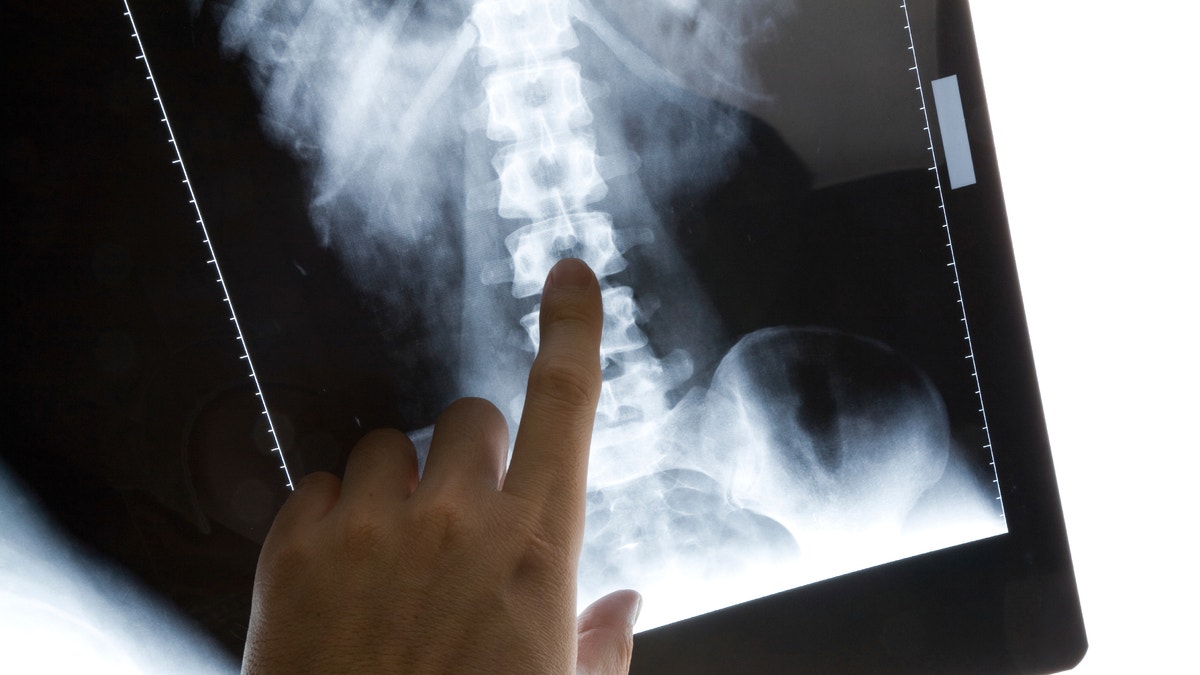
body x-ray photo for background (iStock)
Healthcare workers in labs where patients undergo heart procedures guided by X-rays may be at higher risk for cataracts, skin lesions, bone disorders or cancer than other healthcare workers, according to a new study.
Procedures in the "cath lab" - named for the catheters threaded into the heart - are done for all forms of cardiac disease, like congenital heart defects, ischemic heart disease or heart arrhythmias, said lead author Maria Grazia Andreassi of the CNR Institute of Clinical Physiology in Pisa, Italy.
"These procedures, highly effective and often life-saving, require substantial radiation exposure to patients," Andreassi told Reuters Health by email.
But staff members, too, are exposed to radiation. In particular, for the cardiologists and electrophysiologists who work near the patient and the radiation source, "the cumulative dose in a professional lifetime is not negligible," Andreassi said.
The researchers used questionnaires to gather work-related and lifestyle information, current medications and health status for 466 exposed hospital staff, including interventional cardiologists, electrophysiologists, nurses and technicians, half of whom had been working for at least 10 years. They also surveyed 280 staffers who had not been exposed to radiation in the cath lab.
Almost 3 percent of interventional cardiology staff had a history of cancer, compared to less than 1 percent of the unexposed comparison group. Eight percent of lab workers had experienced skin lesions, 30 percent had an orthopedic illness and five percent had cataracts, compared to two percent, five percent and less than one percent of the unexposed group, respectively.
Doctors had higher risks than nurses or technicians, and risk was higher for those who had been working more than 16 years, as reported in Circulation: Cardiovascular Interventions.
Stroke and heart attack risk were similar in the radiation and non-radiation exposure groups.
"Compared to healthcare professionals not exposed to radiation, workers with more than 16 years of occupational work are approximately 10 times more likely to experience cataracts and eight times more likely to have cancer after adjusting for other confounders," like age and smoking status, Andreassi said.
Protective measures like leaded aprons, thyroid collars, leaded glasses, and overhead radiation shields can reduce the radiation dose to the operators, but are still not used regularly in every laboratory, Andreassi said.
Healthcare workers in the cath lab "sort of know there is a risk but it's typically presented to young people as something to know about and not to worry about," said Dr. Lloyd Klein of Advocate Illinois Medical Center in Chicago, who coauthored an editorial accompanying the new study.
"Everyone wears lead aprons, and increasingly, lead caps," Klein told Reuters Health by email. "We are careful about unnecessary exposure."
But wearing lead creates orthopedic problems and doesn't completely protect against the effects of radiation, he said.
The Occupational Safety and Health Administration and federal and state agencies probably need to get more involved than they already are, he said.
"Unfortunately, interventional cardiologists are often inadequately trained in radiation safety and radiobiology, and hospitals have few training programs regarding radiation risk and exposure," Andreassi said.
SOURCE: http://bit.ly/1SLoXYk Circulation: Cardiovascular Interventions, online April 12, 2016.
